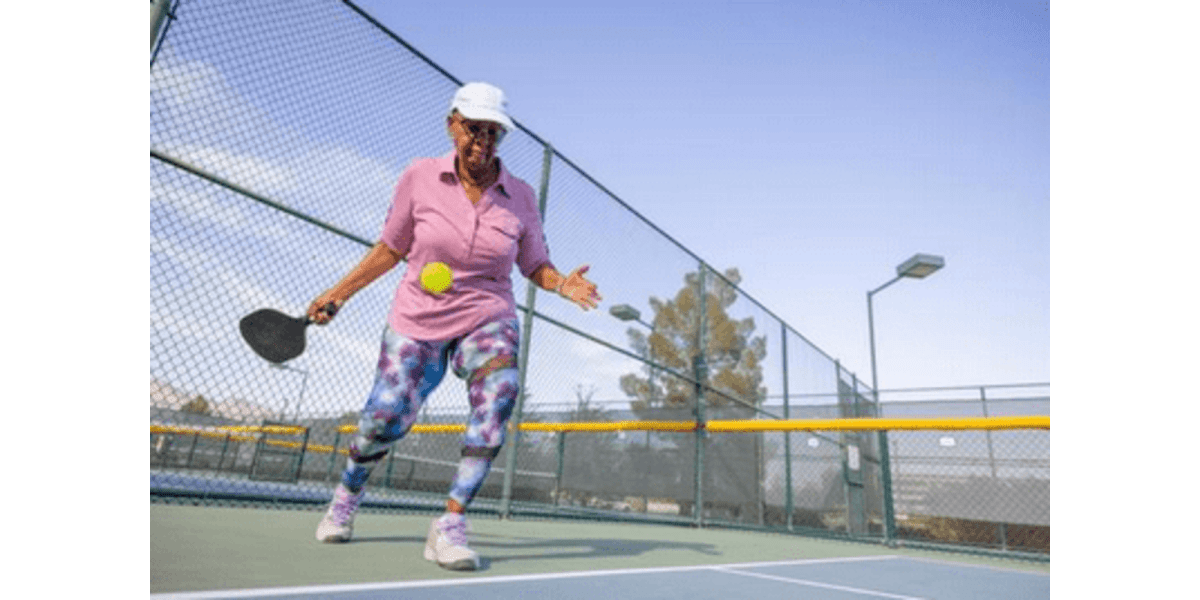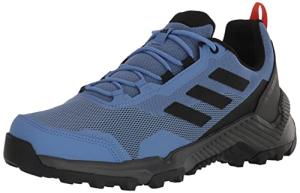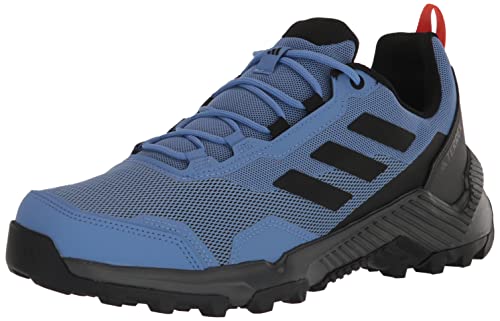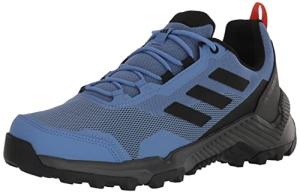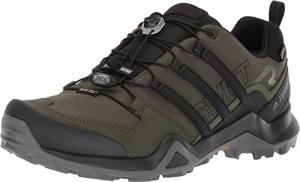Introduction:
Learning to play pickleball opens the door to an exciting and engaging sport that combines elements from tennis, badminton, and ping-pong. This comprehensive guide will provide everything a beginner needs to start their pickleball journey, including essential rules, techniques, and equipment. With its simple rules and quick gameplay, pickleball is an enjoyable way to stay active and social.
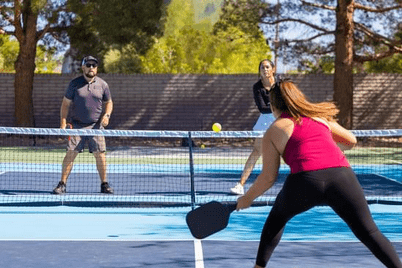
Pickleball has a rich history, evolving from a family game in the 1960s to a popular sport played by millions today. Understanding the court dimensions, required equipment like paddles and balls, and the basic rules is crucial for any newcomer. With a few tips on strategy and etiquette, anyone can quickly find joy in playing and mastering this dynamic sport.
Embracing pickleball not only offers health benefits but also fosters connections with others who share a love for the game. Whether played indoors or outdoors, learning pickleball is a rewarding experience that brings fun, fitness, and friendship into players' lives.
Key Takeaways
- Pickleball combines elements of several sports and is easy for beginners to learn.
- Essential knowledge of the court and equipment is key to starting the game.
- Playing pickleball offers fitness benefits and a chance to socialize with others.
Origins and Evolution of Pickleball
Pickleball has a rich history that combines elements from various sports. Its journey from a simple backyard game to a popular paddle sport highlights its unique features and appeal.
Historical Roots
The game of pickleball was created in 1965 by Joel Pritchard, Bill Bell, and Barney McCallum. They wanted an engaging activity for their children during a summer day on Bainbridge Island, Washington. Using improvised equipment, they combined elements of badminton, table tennis, and tennis to craft this new game.
The original rules were straightforward, allowing players to adapt quickly. As its popularity grew, the need for standardized rules emerged. This led to revisions in the early 1970s. Today, pickleball is played in various settings, from local courts to international competitions, showcasing its widespread appeal and adaptability.
Pickleball vs. Tennis vs. Badminton vs. Ping-Pong
Pickleball shares features with tennis, badminton, and ping-pong but stands out in many ways. In pickleball, players use solid paddles to hit a perforated plastic ball, which provides a unique gameplay experience.
- Tennis involves larger courts and a heavier, felt-covered ball.
- Badminton requires a feathered shuttlecock, focusing on aerial play.
- Ping-pong (or table tennis) requires quick reflexes and plays on a smaller surface.
While all these sports require skill and strategy, pickleball is often seen as more accessible. Its smaller court size and slower ball speed make it easier for beginners to learn and enjoy. Each sport offers different challenges, but pickleball’s inclusive nature contributes to its rapid rise in popularity.
Understanding the Pickleball Court
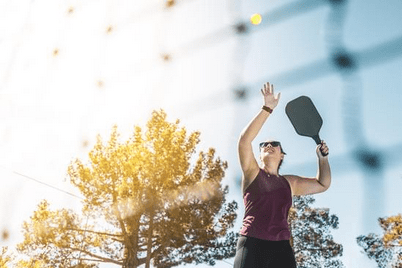
The pickleball court has specific dimensions and features that are essential for gameplay. It is important for players to familiarize themselves with these aspects to play effectively.
Court Layout and Dimensions
A standard pickleball court measures 20 feet wide by 44 feet long, which is suitable for both singles and doubles matches. The total area amounts to 880 square feet.
The court is divided by a centerline that runs from the net to the back baseline, creating two equal halves. The sidelines mark the width of the court, while the backlines indicate the length. Each side of the court includes specific markings that players follow during gameplay.
The net stands 36 inches high at the sidelines and 34 inches high at the center. This height is lower than a tennis net, allowing for different gameplay. Understanding these measurements helps players position themselves correctly and strategize effectively.
The Non-Volley Zone Explained
The non-volley zone (NVZ), commonly known as "the kitchen," is a crucial part of the court. It extends 7 feet from the net on both sides. Players may not volley the ball while standing in this zone.
This rule prevents players from smashing the ball right at the net, promoting a more strategic style of play. If a player steps into the NVZ, they must let the ball bounce before returning it.
It is essential to know the boundaries of the non-volley zone. Players often use this space to set up their shots but need to avoid any violations. Understanding the NVZ helps players stay in the game and enhances overall performance.
Essential Pickleball Equipment

Having the right equipment is key to enjoying and succeeding in pickleball. The essential gear includes paddles, balls, and nets. Each piece plays a unique role in the game.
Choosing the Right Pickleball Paddle
Selecting a paddle is crucial for performance. Paddles come in various shapes, weights, and materials. Beginner players often prefer lightweight paddles for better control. Paddles typically weigh between 6 to 14 ounces.
Materials:
- Wood: Affordable and durable, but heavier.
- Composite: Lightweight and provides good power and control.
- Graphite: Offers less weight and greater touch but can be more expensive.
Players should also consider grip size. A comfortable grip enhances performance and reduces the risk of injury. Overall, trying out a few paddles can help players find the best fit for their style.
Pickleball Balls and Nets
Pickleball balls are lightweight and made of durable plastic. They have holes, which create a unique flight pattern. There are two main types of balls:
- Indoor Balls: More holes for less bounce; typically used in gym settings.
- Outdoor Balls: Fewer holes, designed for greater durability; better for outdoor play.
Nets are similarly important. A standard pickleball net is 36 inches high at the sides and 34 inches at the center. Portable nets are available for those who want to set up games easily in different locations. Properly set up nets ensure fair play and enhance the game experience.
When starting out, choosing the right balls and net can make a significant difference in gameplay.
The Basic Rules of Pickleball
Pickleball has simple rules that help players enjoy the game while still providing challenges. This section covers important aspects such as the scoring system, serving rules, and key play rules.
Scoring System
In pickleball, games are usually played to 11 points. A team must win by at least 2 points. If the score ties at 10-10, play continues until one team gains a two-point lead.
Players score points only when they are serving. Each player on a team will serve until they lose a rally. Points are recorded as follows:
- Server starts with 0-0.
- The score is called with the server's score first.
If a game goes beyond 11 points due to a tie, it continues until one team achieves a two-point advantage, making it a tense and exciting finish.
Serving Rules and Faults
The serving rules in pickleball are straightforward but essential. The serve must be made underhand and sent diagonally across the court. It has to land in the opposite service court.
Key serving rules include:
- Each team must serve from the right side when the score is even and the left side when the score is odd.
- A fault occurs if the serve hits the net or goes out of bounds.
- Players must avoid stepping into the non-volley zone while serving.
Understanding these rules helps players make valid serves and prevents unnecessary errors.
Key Play Rules
Pickleball includes several critical play rules that players should know. The double bounce rule states that the ball must bounce once on each side before it can be volleyed. This encourages longer rallies and strategic play.
The non-volley zone rule specifies a 7-foot area on both sides of the net. Players cannot hit the ball in the air while standing in this zone. This rule helps prevent aggressive net play, allowing for a more balanced game.
Additionally, players should also remember the fault rules, such as hitting the ball out of bounds or failing to return the ball across the net. Familiarity with these rules helps players play competitively and enjoyably.
Mastering Pickleball Techniques
To excel in pickleball, mastering techniques is crucial. This includes effective grips, strokes, and advanced shots. Each technique plays a significant role in improving accuracy and gameplay strategy.
Effective Grips and Strokes
The grip affects how a player controls the paddle. A common grip is the Eastern grip, which allows for better control during serves and volleys. For beginners, the Continental grip is beneficial for various shots, providing flexibility.
Keystrokes include the underhand stroke for serves and the forehand and backhand strokes for returns. Players should practice footwork to position themselves correctly for each shot. Good footwork facilitates quicker movements and improves balance, making it easier to execute accurate shots.
Consistency in practice helps refine these techniques, leading to better performance on the court.
Advanced Shots and Strategies
As players progress, they can incorporate advanced shots into their game. The lob, for example, can be used to surprise opponents. Mastering this shot requires timing and understanding when to use it strategically.
The drop shot is another effective move, placing the ball just over the net and forcing opponents to run. Developing a variety of shots increases unpredictability, making it harder for opponents to defend.
Additionally, mastering court positioning and knowing when to approach the net can greatly enhance gameplay. It is important to recognize the right moments for a volley versus a groundstroke. Practicing these advanced techniques leads to improved accuracy and overall game strategy.
Developing Game Strategy and Tactics
Game strategy and tactics can significantly impact success in pickleball. A player’s approach varies based on whether they are participating in singles or doubles play. Understanding the right positioning and court awareness is crucial to improve effectiveness during gameplay.
Singles vs. Doubles Play
In singles play, players must cover the entire court. Every shot counts, and effective strategy focuses on shot placement and forcing the opponent to move. Key strategies include:
- Control the Center: Positioning in the middle allows faster responses to both sides.
- Deep Shots: Hitting deep into the opponent's court can push them back and create opportunities for winning shots.
- Mix Up Pacing: Varying shot speeds can disrupt the opponent's rhythm.
Doubles play introduces different dynamics. Communication is vital. Players should take turns covering the court effectively. Helpful tactics for doubles include:
- Serve Deep: Aim to serve deep to stretch the opponent's formation.
- Take the Net: Establishing a strong presence at the net can control the game flow.
- Rotation: Players should rotate positions after every shot to maintain coverage and confuse opponents.
Positioning and Court Awareness
Positioning is essential for maximizing shot effectiveness. Players should always be aware of their location on the court. Important points include:
- Ready Position: Stay in a balanced stance, ready to move quickly for any shot.
- Zone Awareness: Understand the non-volley zone and use it to advantage. Players can attack opponents while staying out of their reach.
Players should also be aware of their opponents' positions. Martial awareness techniques include:
- Watch for Weaknesses: Look for patterns in opponents’ playstyle that can be exploited.
- Communicate with Partners: In doubles, maintaining clear communication helps avoid confusion and maximizes teamwork.
The Importance of Practice and Training
Regular practice is vital for any athlete wanting to improve, and pickleball is no exception. Focused training helps players enhance their fundamentals, boost coordination, and refine their reflexes. This section breaks down effective methods for both solo and partnered training to elevate pickleball skills.
Solo and Partner Drills
Practicing alone can help a player master essential skills. Solo drills like wall bounces and dinking against a rebounder allow for repetition and muscle memory building. Players can focus on control, accuracy, and shot variety.
For those with partners, cooperative drills are essential. Players can practice serves, volleys, or specific shots like the lob in a controlled setting. Communicating during these drills fosters teamwork. By incorporating variations, such as targeting weaknesses or practicing under pressure, players can simulate game situations that develop their skills effectively.
Physical Conditioning and Coordination
Physical conditioning involves building strength, endurance, and flexibility. Ladder drills are excellent for improving footwork, which is crucial in pickleball. A player’s ability to swiftly change direction can lead to more successful returns and efficient court coverage.
Coordination is key in executing shots effectively. Practicing reaction drills can enhance reflexes, allowing players to respond quickly to opponents’ shots. Simple exercises like jumping rope can improve agility. Focusing on these areas will lead to better performance on the court and noticeably improved gameplay.
Rules of Etiquette and Sportsmanship
Respect and fairness are key parts of playing pickleball. Good etiquette helps create an enjoyable environment for everyone. Knowing how to act on the court and communicate is essential.
Conduct on the Court
Players should always show respect for others. This includes introducing oneself to new players and ensuring a friendly atmosphere. It’s important to avoid using obscene language or negative gestures.
Players should not talk down to others or raise their voices during games. Good sportsmanship means congratulating opponents, whether winning or losing. This attitude strengthens community bonds.
Additionally, thank any officiating referee or linespeople after a match. Simple gestures like these demonstrate respect for the game and its participants.
Calling the Score and Line Calls
Clear communication is crucial in pickleball. Players should always announce the score before serving. Saying it clearly helps everyone stay informed and maintains fairness.
When calling the ball in or out, players should be honest and direct. If unsure, players should give the benefit of the doubt to their opponent. This approach fosters a healthy competitive spirit.
Using hand signals can also improve communication during matches. Remember to communicate effectively with partners as well. This reduces confusion and enhances teamwork while on the court.
Pickleball for Health and Social Benefits
Pickleball offers numerous health and social benefits that make it an appealing choice for many.
Mental Health Benefits
Playing pickleball can reduce stress and anxiety. The game's focus helps players forget their everyday worries. This mental break can improve overall well-being.
Physical Health
Pickleball is a great way to improve coordination and reflexes. The fast pace of the game requires quick movements, enhancing physical agility. Regular play also provides aerobic exercise, benefiting cardiovascular health.
Social Connections
Pickleball is often played in groups, making it a social activity. It encourages interaction among players, which can help reduce feelings of loneliness. Building friendships through the game can enhance quality of life.
Summary of Benefits
| Benefit | Description |
|---|---|
| Mental Health | Reduces stress and improves focus. |
| Physical Health | Enhances coordination and provides aerobic exercise. |
| Social Aspect | Promotes friendships and community connection. |
Frequently Asked Questions

This section provides answers to common questions that beginners may have about pickleball. Topics include the basic rules, necessary equipment, and tips for learning the game.
What are the basic rules of pickleball for beginners?
Pickleball is played to 11 points, and a player must win by 2 points. The serve must be made diagonally, and players must stand behind the baseline. There is a non-volley zone near the net where players cannot hit the ball in mid-air.
Can you recommend some effective drills for a pickleball beginner?
Beginners can practice basic drills such as wall bounces, serve accuracy, and dinking. These drills help improve hand-eye coordination and control. Regular practice of these skills can lead to better performance during games.
What equipment do I need to start playing pickleball?
To start playing pickleball, a player needs a paddle and a plastic ball with holes. Comfortable athletic shoes and appropriate clothing are also important. Some players may choose to use protective eyewear.
How can I find pickleball courts or facilities near me?
To find local pickleball courts, individuals can use online directories, community center websites, or sports apps. Many parks also have pickleball courts available for public use. Joining local pickleball groups can also provide information on where to play.
What are some tips for teaching kids to play pickleball?
When teaching kids, focus on fun and engaging activities. Use smaller courts and lighter paddles to make the game accessible. Emphasize teamwork and encourage kids to practice basic skills before playing matches.
How long does it typically take to learn the fundamentals of pickleball?
Most beginners can learn the basics of pickleball within a few hours. With consistent practice, they can develop their skills further in a few weeks. Individual learning speeds may vary, but regular play will help improve abilities quicker.
